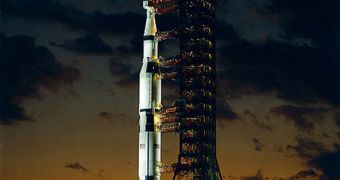The American space agency has a very broad agenda for its astrobiology programs, but recently its scope grew even more, after eight research projects were selected for further development under the Astrobiology Science and Technology for Instrument Development (ASTID) program.
As a general rule, all instruments that will be developed as a result of these projects must be capable of supporting space exploration missions in our solar system, but also ground-based operations, such as for example being installed in telescopes.
An added benefit will be that the new instruments will be unique in their class, enabling scientists to open up new areas of research in a variety of domains related to astrobiology. With this type of guidance, experts hope to be able to create novel classes of payloads for spacecraft.
The ASTID program has a rich history, having already provided advanced instruments such as the Urey Mars Organic and Oxidant Detector, which is currently aboard the ExoMars orbiter. The probe is controlled by the European Space Agency (ESA).
The Magneto-Optical Phase Enantiomeric Detector (MOPED) was also developed with ASTID funds. This instrument is used for detecting chiral biomarkers, which may indicate the presence of alien life on extrasolar planets.
For the new batch of projects, NASA was especially interested in creating instruments capable of scanning the surfaces of distant exoplanets and exomoons. Another objective was gaining the ability to follow-up on data provided by landers such as Viking and Phoenix Mars Lander.
One of the newly-selected projects is the mineral-organic mapping tool called GURILA, which stands for Green and UV Raman Imager with Laser-induced Autofluorescence. NASA Jet Propulsion Laboratory (JPL) expert Rohit Bhartia is the principal investigator for this instrument.
“The GURILA team will be developing a micromapping organic and mineral detection system that will be used to image organics at sub-parts-per-billion sensitivity,” a press release on the NASA Astrobiology Institute (NAI) website explains.
“The instrument will be a valuable addition to a Mars sample return mission, and future missions to moons, asteroids, and comets, providing astrobiologists with critical new insights into the history and habitability of our solar system's planets and moons,” the statement goes on to say.
Another interesting instrument that was selected for further development is the Fiber Optic Probe for Chemical Characterization of Titan's Lakes, whose principal investigator is JPL expert Robert Hodyss.
This particular tool will play an essential role in understanding that materials that dissolve in the lakes adorning the poles of Saturn's largest moon Titan. Astronomers believe that the Jovian moon Europa and the Saturnine moon Titan and Enceladus have high chances of supporting life.
By studying the liquid hydrocarbon lakes, this instrument will be able to provide more data not only on the chemical composition of the liquid, but also on the structure of Titan's atmosphere, landmasses and natural cycles.
“We still know very little about how Titan's lakes are affected by processes like erosion, pluvial transport of organics, and the movement of photochemical products between the atmosphere and the lakes,” the NAI statement says.
“Titan is the only moon in our solar system with a thick atmosphere, and the Cassini mission has revealed it to be a world where active organic chemistry and weather occur,” the document adds.
When deployed on the moon's lakes, the Fiber Optic Probe will carry absorption and fluorescence spectroscopy tools, which will enable it to analyze and characterize substances present in the liquid methane/ethane mixture that makes up the liquid bodies.

 14 DAY TRIAL //
14 DAY TRIAL //